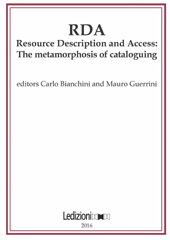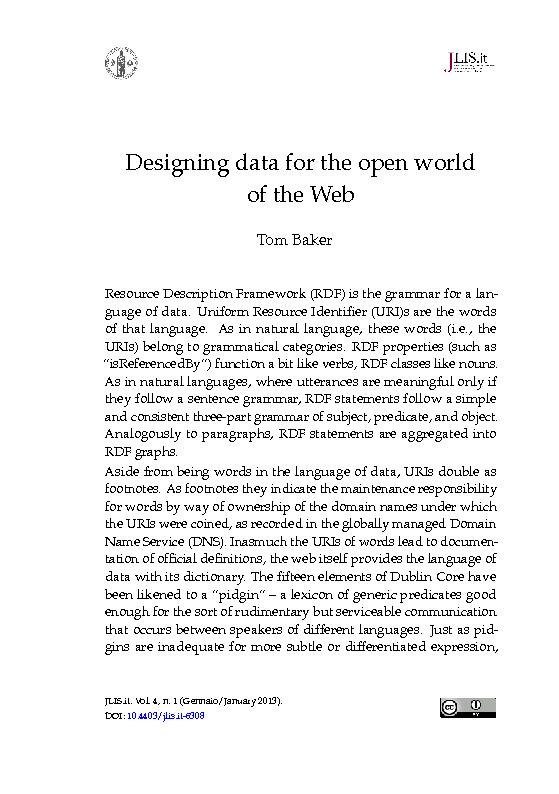Designing data for the open world of the web.
63-66 p.
The domain name system of the world wide web provides a managed space of globally unique identifiers for web pages -- Uniform Resource Identifiers, or URIs. URIs can also be used to name things – specifically, to name things in the world ("people," a "books," or "Nelson Mandela"); to name concepts used to describe those things ("Renaissance Sculpture" or "Lyme Disease"); and to name relationships between things (this book "was translated by" that person). Because URIs, used as names, are globally unique, they serve to anchor the strands in "webs of meaning" ("semantic web"). Each strand of the web is a statement following a grammar, the Resource Description Framework (RDF), which uses URIs as its words.
Each RDF statement expresses a simple idea – "Dante wrote L'Inferno" or "Dante was born in Florence" – which, taken together, can express complex webs of relationships. Expressing data as statements makes it easy to integrate data across many different sources ("linked data"). The opportunity for cultural heritage lies in translating the traditions of resource description into the language of URIs so that its descriptions of Works, Items, Subject Headings, and People can serve as central hubs in growing webs of linked data. [Publisher's Text].
-
Artículos del mismo número (disponibles individualmente)
-
Información



